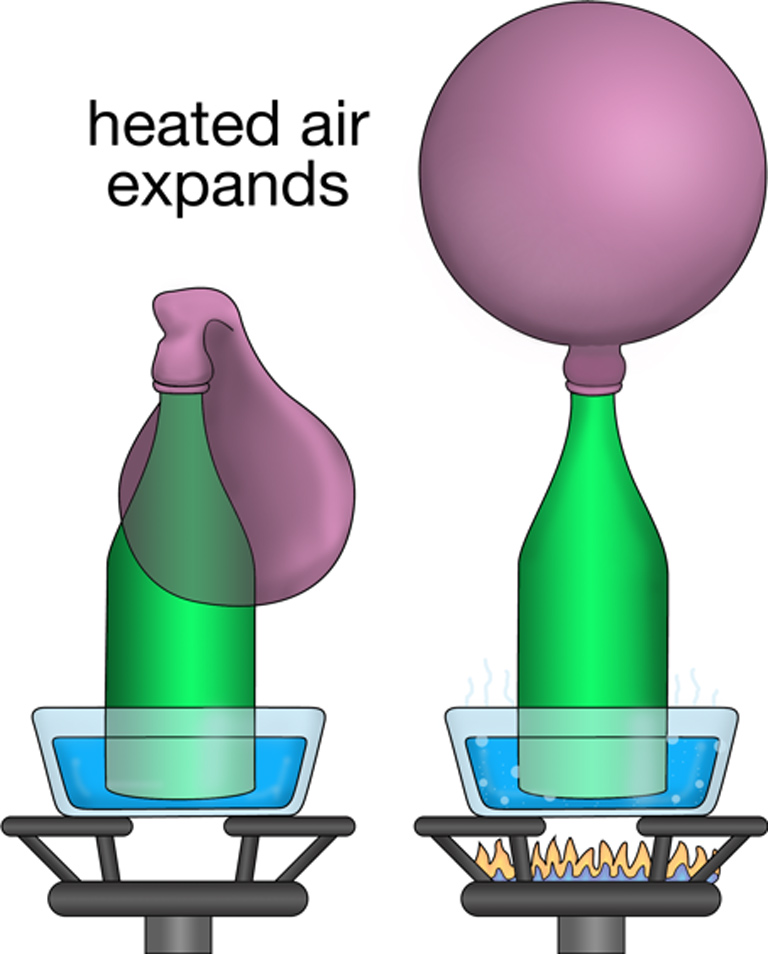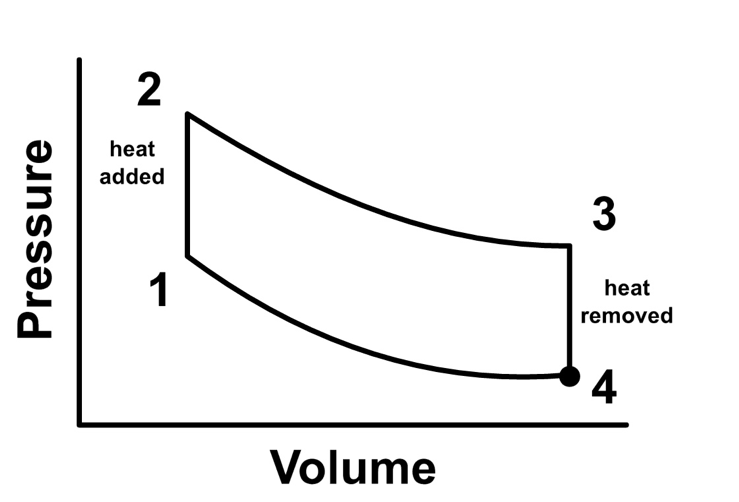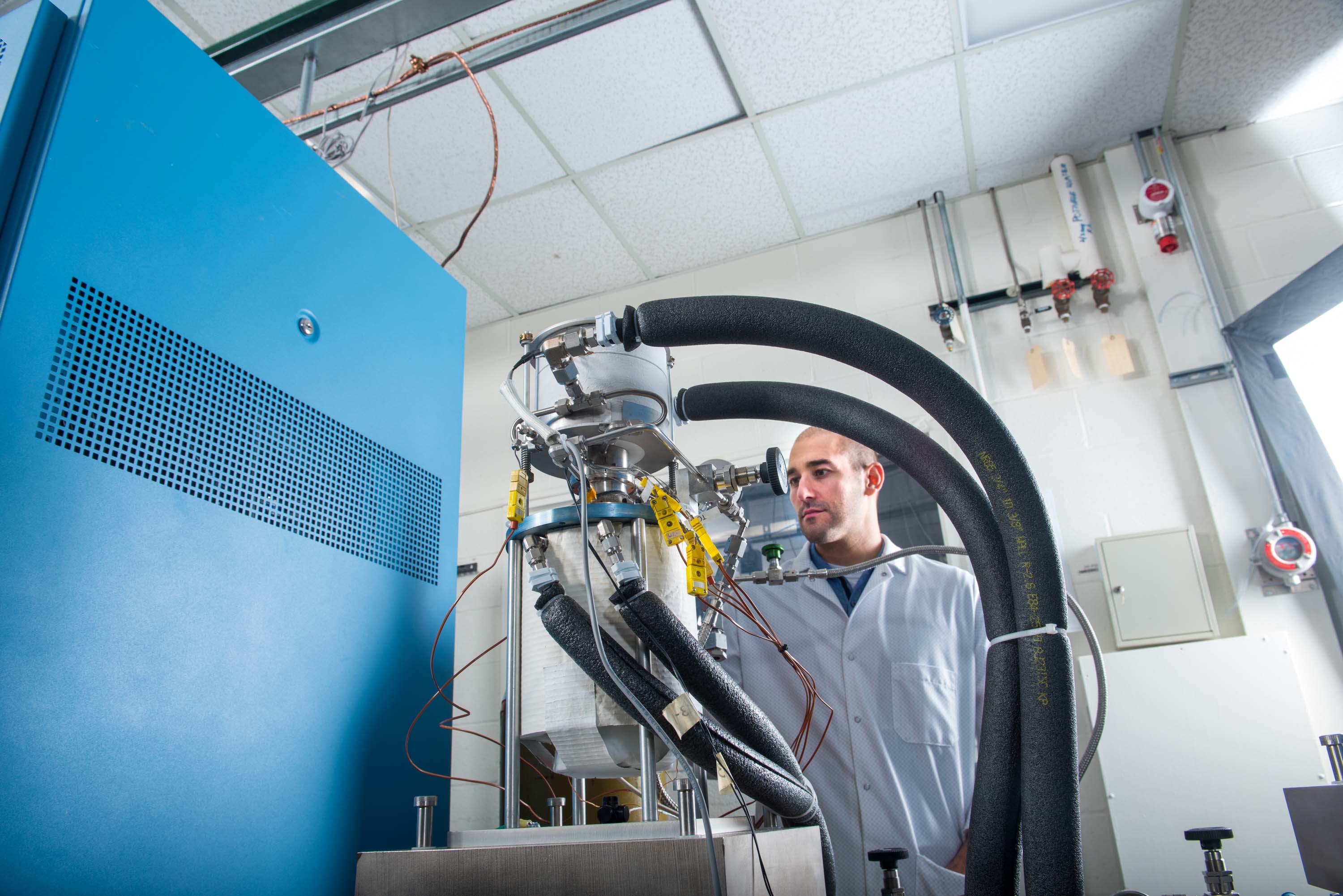Dynamic Radioisotope Power
Small and lightweight, these maintenance-free engines can operate on small spacecraft that need electrical power to run optics, sensors, recording, and communications systems to get data back to scientists on Earth.
Quick Facts
NASA considers using radioisotope power systems (RPS) when they would safely enable or significantly enhance a mission’s ability to meet its objectives. Radioisotope power systems are particularly well suited for dark, dusty, or harsh environments in the Solar System where other types of power systems may be ineffective or impractical.
NASA's radioisotope power systems program provides several types of systems currently in use including radioisotope thermoelectric generators (RTGs) and radioisotope heater units. The program is funding a project to develop more efficient technologies that would support dynamic radioisotope power systems of the future. Such systems would produce power using a “closed” thermodynamic cycle, such as a Stirling or Brayton cycle. Parallel efforts are focused on creating and producing more efficient thermocouples that could help power future radioisotope power systems.
An ideal thermodynamic cycle forms a closed system, that can convert energy into work and vice versa. Such a system exchanges energy, but not matter, with its surroundings. A gas contained inside such a closed system undergoes compression, heating, expansion and cooling to produce work. This mechanical work can then be converted into electricity.

Let's take the simple example of an inflated balloon. If it is heated, the pressure of the gas rises and acts on the balloon causing it to stretch and grow. If it is cooled, the pressure reduces and the balloon shrinks. The balloon does work as the gas expands and contracts in response to the difference in temperature and pressure. If the balloon or any volume of gas is heated and cooled alternately and continuously, it undergoes a simple, but inefficient, closed thermodynamic cycle.
In the early 1800s, Reverend Dr. Robert Stirling developed a thermodynamic cycle engine, known as a Stirling engine, which he used to demonstrate a water pumping machine. This machine was efficient; it used pistons and cylinders, and cooled and heated gas. It included what is now called a “regenerator”, that helps restart the cycle by cooling the gas down so it can be heated again.

Moving pistons and stationary cylinders can be put together so that they work similarly but a lot more efficiently than the expanding and contracting balloon. A gas contained in the cylinder can be heated so its pressure increases, and it expands, pushing against the piston. The resulting force on the piston moves it inside the cylinder across a distance, doing work. If the gas in the cylinder is cooled, the reverse happens as the gas contracts, drawing the piston in the opposite direction, again doing work.
The system has a "hot end" and a "cool end" where the gas is heated and cooled. The volume of gas can be heated and cooled by quickly shuttling it between these two ends continuously. The gas is moved by the displacer and the gas acts upon the power piston. The regenerator helps improve the efficiency of the cycle – it conserves energy, extracting heat from the gas as it moves from the hot end to the cold end, and gives up that heat as the gas flows in the opposite direction.
Such an engine can be coupled with an alternator, which helps convert the heat energy of the gas into electrical power. This type of system is known as a "power convertor." Such systems are called "dynamic" as they have moving parts.
In a Stirling convertor, the useful work produced by the thermodynamic cycle moves the piston and this motion can be converted into electricity using an alternator. Part of the alternator is attached to a reciprocating piston which creates an alternating current, and a rectifier converts this current into direct current that a spacecraft can use.
Space applications for systems with moving parts need to be robust and reliable in the long term. One way to ensure that dynamic power convertors work reliably for a long time, is to design radioisotope power systems to avoid contact of the moving components.
Some free-piston Stirling convertors use a gas bearing system that pushes radially against the piston. This keeps the piston centered, and away from the side walls. Another type uses a flexure bearing, which provides springing, and allows movement in the axial direction, but is stiff in the radial direction. This prevents the piston from impacting the side walls.
Yet another type of Stirling convertor uses a reciprocating displacer piston to shuttle the gas between the hot and cold end. Another variation is the thermoacoustic engine that, instead of a displacer piston, uses pressure variation of sound waves induced by a temperature difference to cycle the gas back and forth. This type of device eliminates one of the moving components and is mechanically simpler, but typically is less efficient compared to the displacer driven engine.
While Stirling convertors have reciprocating parts, Brayton convertors use a single rotating mechanical assembly: a miniature turbomachine rotor which includes a rotary alternator. Gas bearings and clearance seals eliminate mechanical contact between moving surfaces, which permits high rotational speeds, improving efficiency and enabling long lifetimes.
NASA is currently working on maturing several concepts for potential use in a future Dynamic Radioisotope Power System.


